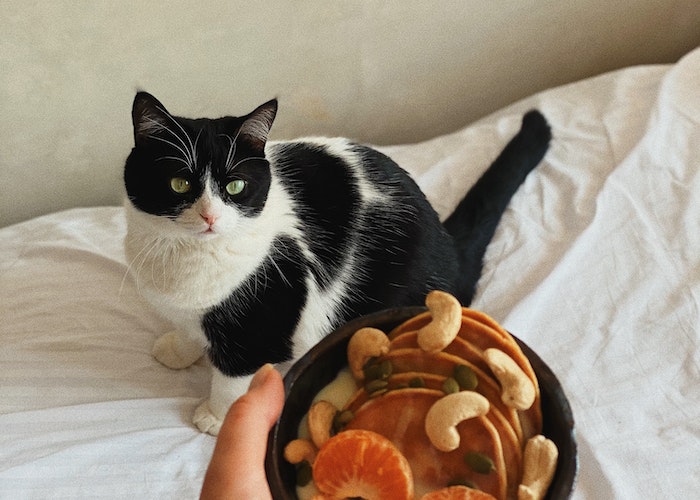In a world where sustainability is becoming increasingly important, pet owners are seeking eco-friendly alternatives to care for their furry friends. Biodegradable pet products offer a solution that not only benefits our pets but also the environment. From biodegradable pet waste bags to compostable cat litter, these products minimize the ecological footprint associated with pet ownership. In this comprehensive guide, we will explore the importance of eco-friendly pet care and delve into various biodegradable pet products available on the market. By making conscious choices, we can ensure a healthier future for both our beloved pets and the planet.
You must watch these posts
Benefits of Using Biodegradable Pet Products
Choose Biodegradable Pet Products
Biodegradable Pet Product Brands
Sustainable Pet Product Expert
Guidelines for Eco-friendly pet care

1. Understanding the Need for Eco-Friendly Pet Care
- The Environmental Impact of Traditional Pet Products Traditional pet products, such as plastic waste bags and conventional cat litter, contribute to environmental pollution. Plastic waste bags take hundreds of years to decompose, ending up in landfills or polluting water bodies. Conventional cat litter, often made from clay, involves the extraction of natural resources and emits harmful chemicals during production. Understanding the negative environmental consequences of these products highlights the urgency of embracing eco-friendly alternatives.
- The Rise of Sustainable Living and its Influence on Pet Care As society becomes more conscious of sustainable living, individuals are extending their eco-friendly practices to their pets. People are adopting greener lifestyles, reducing waste, and opting for environmentally responsible options. This shift in mindset has led to the development and popularity of biodegradable pet products that align with sustainable values.
- The Benefits of Eco-Friendly Pet Care Eco-friendly pet care offers numerous benefits for both pets and the planet. By using biodegradable products, pet owners can reduce waste and minimize their carbon footprint. Biodegradable pet waste bags break down naturally over time, reducing the accumulation of plastic waste in landfills and oceans. Compostable cat litter provides a safe and eco-friendly option for pet owners, as it can be composted and returned to the earth as nutrient-rich soil. Additionally, natural and organic pet food ensures healthier and more nutritious diets for pets, free from harmful chemicals and artificial additives.
2. Exploring Biodegradable Pet Products
- Biodegradable Pet Waste Bags: A Greener Alternative Biodegradable pet waste bags are an essential component of eco-friendly pet care. Made from plant-based materials such as cornstarch or bioplastics, these bags break down naturally and minimize environmental impact. They are just as durable and effective as traditional plastic bags, providing a convenient and eco-conscious solution for pet waste disposal.
- Compostable Cat Litter: Reducing Waste and Odor Conventional cat litter made from clay often ends up in landfills, where it contributes to environmental degradation. Compostable cat litter, on the other hand, is made from natural materials such as corn, wheat, or recycled paper that can be safely composted. Not only does compostable litter minimize waste, but it also helps control odors and provides a more sustainable option for cat owners.
- Natural and Organic Pet Food: Healthier Choices Choosing natural and organic pet food ensures that our furry friends receive optimal nutrition while minimizing the environmental impact of the pet food industry. Natural pet food is made from high-quality ingredients, free from artificial additives, hormones, and preservatives. Organic pet food goes a step further, being produced without the use of synthetic pesticides or genetically modified organisms (GMOs). These options promote healthier diets for pets and support sustainable farming practices.
- Sustainable Pet Toys: Fun and Eco-Friendly Pet toys are often made from non-biodegradable materials such as plastic, rubber, or synthetic fibers. However, eco-friendly pet toys made from natural and renewable materials, such as hemp, organic cotton, or recycled materials, offer a greener alternative. These toys are durable, non-toxic, and provide mental stimulation for pets while minimizing their environmental impact.
- Plant-Based Pet Shampoos and Grooming Products: Gentle on Pets and the Planet Traditional pet shampoos and grooming products can contain harsh chemicals that are harmful to both pets and the environment. Plant-based and biodegradable grooming products offer a safer and more sustainable option. These products are made from natural ingredients, free from harmful chemicals, and are easily biodegradable, ensuring that they do not harm aquatic life when washed away.
3. Choosing the Right Biodegradable Pet Products
- Factors to Consider When Selecting Biodegradable Pet Products When choosing biodegradable pet products, it is important to consider factors such as the product’s environmental impact, effectiveness, and affordability. Look for products that are certified as biodegradable or compostable and have transparent labeling. Assess the product’s durability and performance to ensure it meets your pet’s needs and is cost-effective in the long run.
- Reading Labels and Certifications: Understanding Eco-Friendly Claims The market for biodegradable pet products can be overwhelming, with numerous claims and certifications. Familiarize yourself with eco-friendly labels and certifications, such as “Certified Compostable,” “Biodegradable ASTM D6400,” or “USDA Organic.” These certifications validate the product’s sustainability claims and provide assurance that they meet certain environmental standards.
- Product Performance and Durability: Ensuring Quality Biodegradable pet products should not compromise on performance or durability. Assess customer reviews and product ratings to ensure that the products you choose are of high quality and meet your pet’s needs. It is essential to find products that effectively fulfill their intended purpose while being environmentally friendly.
- Pet Preferences and Allergies: Tailoring Choices to Individual Needs Consider your pet’s preferences, allergies, and sensitivities when selecting biodegradable pet products. Just like humans, pets may have specific dietary requirements or sensitivities to certain ingredients. Ensure that the chosen products align with your pet’s health needs and personal preferences.
4. Transitioning to Eco-Friendly Pet Care
- Introducing Biodegradable Pet Products to Your Pet’s Routine When transitioning to biodegradable pet products, it is important to introduce them gradually. For example, when switching to compostable cat litter, mix it with your cat’s existing litter to allow them to adjust. Similarly, when introducing natural and organic pet food, gradually mix it with their current food to avoid digestive issues. Patience and consistency are key during this transition period.
- Overcoming Challenges and Resistance Transitioning to eco-friendly pet products may face some resistance from both pets and owners. Pets may take time to adjust to new litter or food, while owners may find the switch inconvenient or expensive initially. However, it is essential to remember the long-term benefits to both your pet’s health and the environment. With time and persistence, pets and owners can adapt to these changes and embrace a more sustainable lifestyle.
- Educating Others: Spreading Awareness about Sustainable Pet Care Educating friends, family, and fellow pet owners about the importance of eco-friendly pet care can create a ripple effect of positive change. Share your experiences and knowledge about biodegradable pet products, their benefits, and their positive impact on the environment. Encourage others to make conscious choices for their pets, fostering a greater understanding of the significance of sustainable pet care.
5. Additional Tips for Eco-Friendly Pet Ownership

- Adopting a Pet: Promoting Animal Welfare and Sustainability Consider adopting a pet from a shelter or rescue organization. By adopting, you provide a loving home for a pet in need and contribute to reducing the demand for pet breeding and the associated environmental impact. Additionally, spaying or neutering your pet helps control the population of stray animals, which can have detrimental effects on ecosystems.
- Reducing Pet Waste: Responsible Disposal and Composting Properly disposing of pet waste is crucial for maintaining a clean environment. Use biodegradable pet waste bags and dispose of them in designated compost or waste bins. Avoid flushing pet waste down the toilet, as it can contribute to water pollution. If possible, consider composting pet waste in a designated composting system, following local regulations and guidelines.
- Supporting Sustainable Pet Brands: Encouraging Ethical Practices Support pet brands that prioritize sustainability and ethical practices. Research companies that are committed to eco-friendly production processes, use renewable resources, and actively minimize their carbon footprint. By choosing products from these brands, you support their efforts to create a more sustainable pet industry.
- Participating in Recycling Programs: Closing the Loop Many pet product packaging, such as pet food bags or treat containers, can be recycled. Participate in recycling programs offered by local waste management authorities or pet product manufacturers to ensure these materials are properly recycled and do not end up in landfills.
Conclusion
Embracing eco-friendly pet care through the use of biodegradable pet products is a significant step towards creating a greener future. By minimizing waste, reducing environmental impact, and prioritizing sustainability, pet owners can make a positive difference. However, it is essential to be well-informed when choosing these products, considering factors such as effectiveness, certifications, and individual pet needs. By gradually integrating these eco-friendly alternatives into our pet care routines and educating others about their benefits, we can inspire a larger movement towards sustainable pet ownership. Let’s strive to provide the best for our pets while also preserving the planet for future generations. Together, we can create a world where our furry friends thrive in harmony with the environment.
